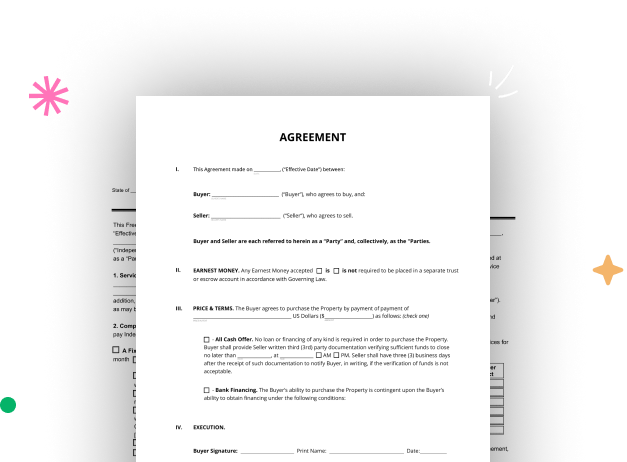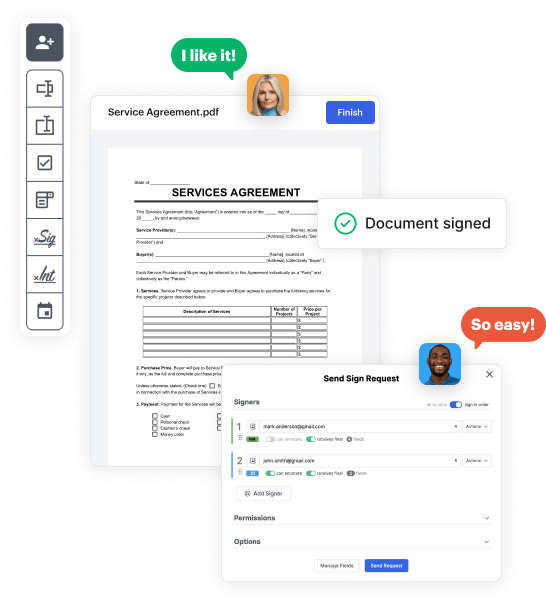

First, sign in to your DocHub account. If you don't have one, you can easily register for free.
Once logged in, go to your dashboard. This is your primary hub for all document-focused processes.
In your dashboard, select New Document in the upper left corner. Choose Create Blank Document to put together the Injunction Legal Document from the ground up.
Add numerous fields like text boxes, images, signature fields, and other interactive areas to your form and assign these fields to particular individuals as required.
Personalize your document by adding directions or any other necessary information utilizing the text tool.
Attentively examine your created Injunction Legal Document for any discrepancies or essential adjustments. Utilize DocHub's editing features to polish your template.
After completing, save your file. You can opt to keep it within DocHub, transfer it to various storage options, or forward it via a link or email.